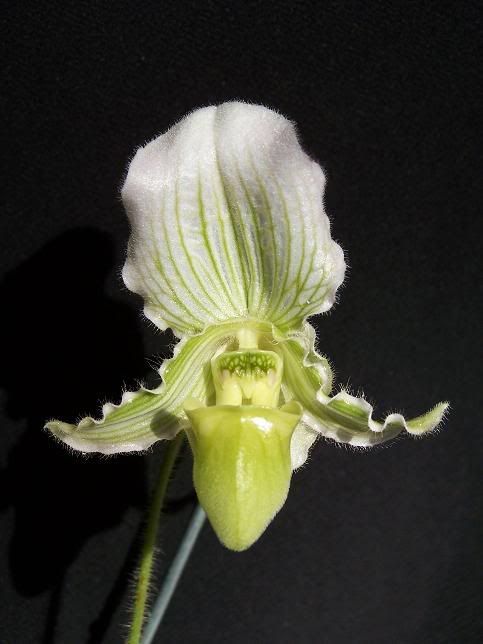Jon in SW Ohio
Reefer, the legal kind
***As a Spotlight thread, please share your pictures, advice, comments, and anything else about the spotlighted slipper***
Paphiopedilum fairrieanum has always been a slipper of much desire. It comes from Northeast India and surrounding areas and was first found around 1857 and named for a collector from Liverpool who bloomed it and showed it at the London Horticultural Society named Mr. Fairrie. Apparently nearly all were lost from cultivation by 1905. Around this time the famous orchid importers Sander & Co offered a reward of 1,000 pounds for its rediscovery and exclusive knowledge of its origin. Sure enough it was quickly rediscovered and it is said that Sanders & Co was saved by this species...even though there was some controversy when reward collection time came.
Now a days, this plant is still quite desired and they can be more variable than you might first think. Different sizes and colorations seem to be the main variables and clones with particularly dark coloration are available as well as a true alba.
This plant seems to be of realtively easy culture and is even well suited to windowsill growing. It enjoys moist root conditions and a humid and airy environment and seems to do well in lighting from quite shady to moderately bright. These plants make impressive clumps, and are a welcome addition to any collection.
Here's some pics I've collected over time, please share yours as well!





Jon
Paphiopedilum fairrieanum has always been a slipper of much desire. It comes from Northeast India and surrounding areas and was first found around 1857 and named for a collector from Liverpool who bloomed it and showed it at the London Horticultural Society named Mr. Fairrie. Apparently nearly all were lost from cultivation by 1905. Around this time the famous orchid importers Sander & Co offered a reward of 1,000 pounds for its rediscovery and exclusive knowledge of its origin. Sure enough it was quickly rediscovered and it is said that Sanders & Co was saved by this species...even though there was some controversy when reward collection time came.
Now a days, this plant is still quite desired and they can be more variable than you might first think. Different sizes and colorations seem to be the main variables and clones with particularly dark coloration are available as well as a true alba.
This plant seems to be of realtively easy culture and is even well suited to windowsill growing. It enjoys moist root conditions and a humid and airy environment and seems to do well in lighting from quite shady to moderately bright. These plants make impressive clumps, and are a welcome addition to any collection.
Here's some pics I've collected over time, please share yours as well!





Jon









